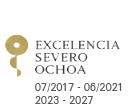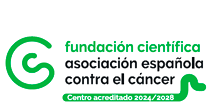-26112018.jpg)
2018/11/26
CIC bioGUNE and CIC biomaGUNE facilities, recognised as Singular Scientific and Technical Infrastructure (ICTS in Spanish) by the Ministry of Science, Innovation and Universities
The Nuclear Magnetic Resonance (NMR) laboratory of CIC bioGUNE, in Derio, has been included in this infrastructure map which is updated every four years.
The ReDIB-Molecular and Functional Imaging Facility of CIC biomaGUNE, in Donostia-San Sebastián, repeats its membership of this group of cutting-edge, top-quality research facilities.
The strategic nature of this infrastructure, unique or exceptional in its particular field, warrants its availability for the entire research community.
The CIC bioGUNE,NMR laboratory in Derio (Bizkaia) has been included in the Map of Singular Scientific and Technical Infrastructure (ICTS in Spanish), which is updated every four years. Similarly, ReDIB, a distributed network initially composed of the CIC biomaGUNE Molecular Imaging Facility (Donostia-San Sebastián) and the Advanced Infrastructure for Translational Imaging (Madrid), has been renewed as a member of this group of cutting-edge, top-quality research facilities.
These ICTS, recognised by the Science, Technology and Innovation Policy Council of the Spanish Ministry of Science, Innovation and Universities, are unique or exceptional in their field, and have very high investment, maintenance and operational costs. The strategic nature and importance of this infrastructure warrants its availability for the entire R&D+i community.
ICTS are state-of-the-art R&D+i facilities which, either individually or on a coordinated basis, provide services for cutting-edge, top-quality research to be conducted. Furthermore, they facilitate the transmission, exchange and preservation of knowledge, the transfer of technology and the promotion of innovation.
Nuclear Magnetic Resonance (NMR) Laboratory
The CIC bioGUNE NMR laboratory thus becomes the Basque Country Resonance Laboratory (LRE in Spanish) node of the network of biomolecular nuclear magnetic resonance laboratories (R-LRB in Spanish). The R-LRB, which also includes nodes in Barcelona and Madrid, encompasses all ultra high field (800 MHz) NMR equipment in Spain, and is designed to provide facilities and specialised technical support for all types of state-of-the-art experiments in relation to biomolecules in solution to be conducted, including determining the structure of proteins and carbohydrates of biomedical interest, the study of their interactions, the search for new drugs and applications in metabolomics for the discovery of molecular biomarkers against diseases. The laboratory is equipped with 800 MHz NMR equipment and two 600 MHz instruments, thereby enabling the LRE node to act in all fields of the network.
Molecular Imaging Facility
The CIC biomaGUNE Molecular Imaging Facility forms part of the ReDIB, a distributed biomedical imaging network which brings together diagnostic tools unique in the field of molecular and functional imaging. Thus, ReDIB now comprises four nodes: this one, the Carlos III National Cardiovascular Research Centre (CNIC, in Madrid), the Research Foundation Hospital La Fe (Valencia) and the Complutense University in Madrid. Together, the facilities, personnel and organisation of this distributed ICTS form a dynamic network, providing a service for the scientific community in the field of molecular and functional imaging and advanced imaging. The network includes state-of-the-art technologies and resources at the service of researchers in the field of biomedical imaging in pre-clinical and clinical contexts.
The Molecular Imaging Facility is an integral part of CIC biomaGUNE. In addition to other equipment, the facility has a cyclotron capable of producing a wide variety of positron-emitting isotopes, a radiochemical laboratory fully equipped with automatic synthesis modules and state-of-the-art quality control equipment, hybrid PET-CT (positron emission tomography-computed tomography) equipment, hybrid SPECT-CT (single photon emission tomography-computed tomography) equipment with energy discrimination, two high-field nuclear magnetic resonance imaging (MRI) devices (11.7 and 7 Tesla), and fluorescence imaging equipment. The facilities also include an animal housing facility for small rodents.
The infrastructure was designed, constructed and equipped for longitudinal and multimodal research projects in the preclinical field, as well as to develop applications in the areas of Preclinical Molecular and Functional Imaging and Nanomedicine.
About CIC bioGUNE
The Centre for Cooperative Research in Biosciences (CIC bioGUNE), located in the Bizkaia Technology Park, is a biomedical research organisation conducting cutting-edge research at the interface between structural, molecular and cell biology, with a particular focus on generating knowledge on the molecular bases of disease, for use in the development of new diagnostic methods and advanced therapies. CIC bioGUNE has been accredited as a “Severo Ochoa Centre of Excellence”, the highest level of recognition for centres of excellence in Spain.
About CIC biomaGUNE
The Centre for Cooperative Research in Biomaterials (CIC biomaGUNE), located in the Gipuzkoa Science and Technology Park, conducts cutting-edge research at the interface between Chemistry, Biology and Physics, and particularly on the properties of molecular level biological nanostructures and their biomedical applications.
CIC biomaGUNE was accredited as a “María de Maeztu” Unit of Excellence after assessment of its compliance with a series of excellence requirements characterised by a high impact and level of competitiveness in its particular field of activity and in the scientific arena worldwide. The center’s research activities are not only regularly subjected to scientific assessment processes conducted by an external and independent committee of scientists, but are frontier research actions developed in line with a strategic program. Furthermore, the centre also selects, trains and attracts talent on an international level, has active partnership and exchange agreements on an institutional level with other top-level research centers and promotes activities for the transfer and dissemination of knowledge to society at large.
See a large version of the first picture
26112018.jpg)
See a large version of the second picture





